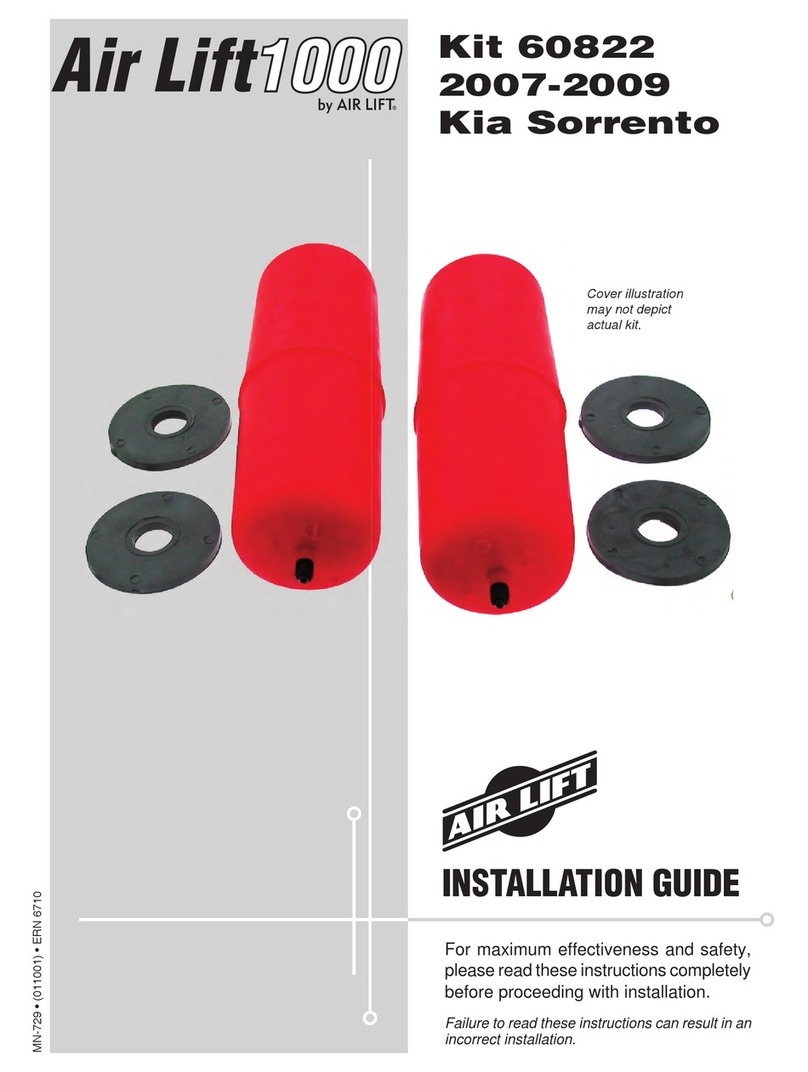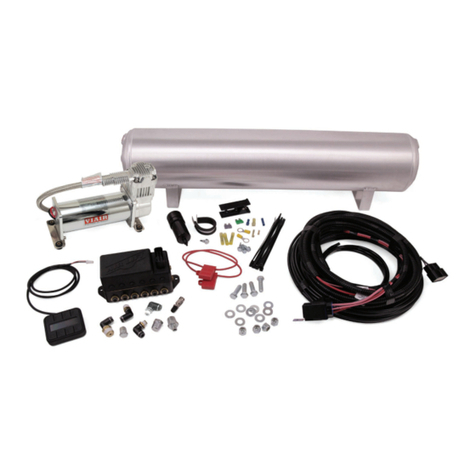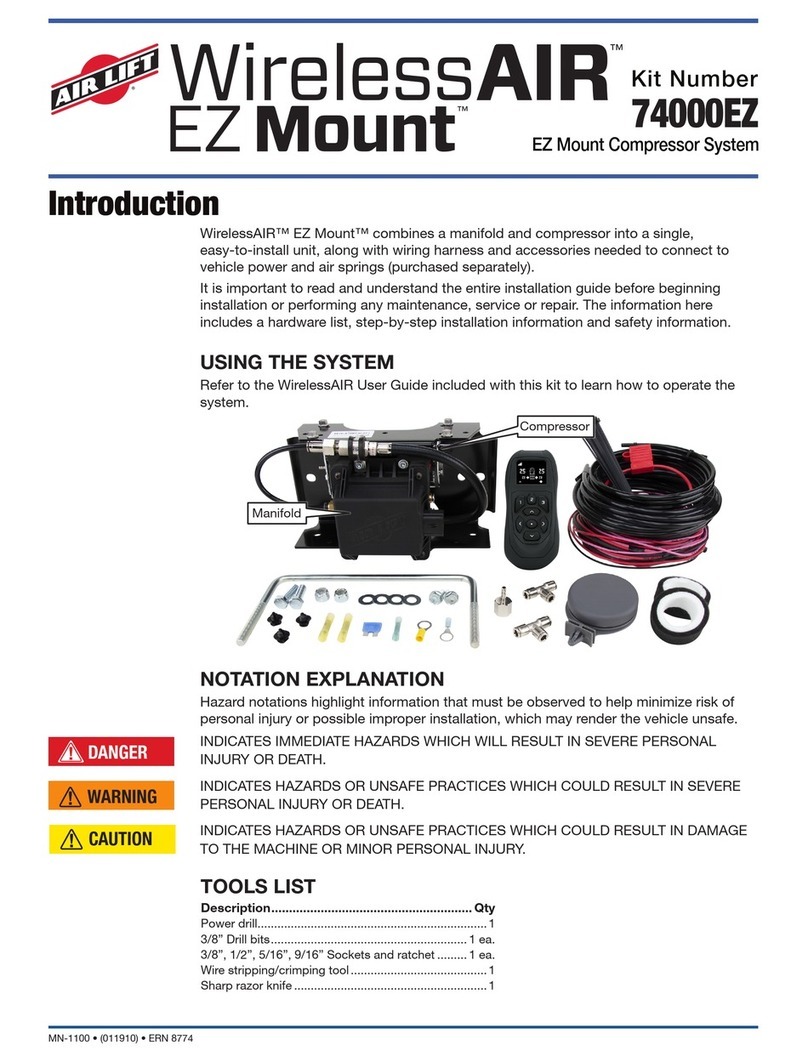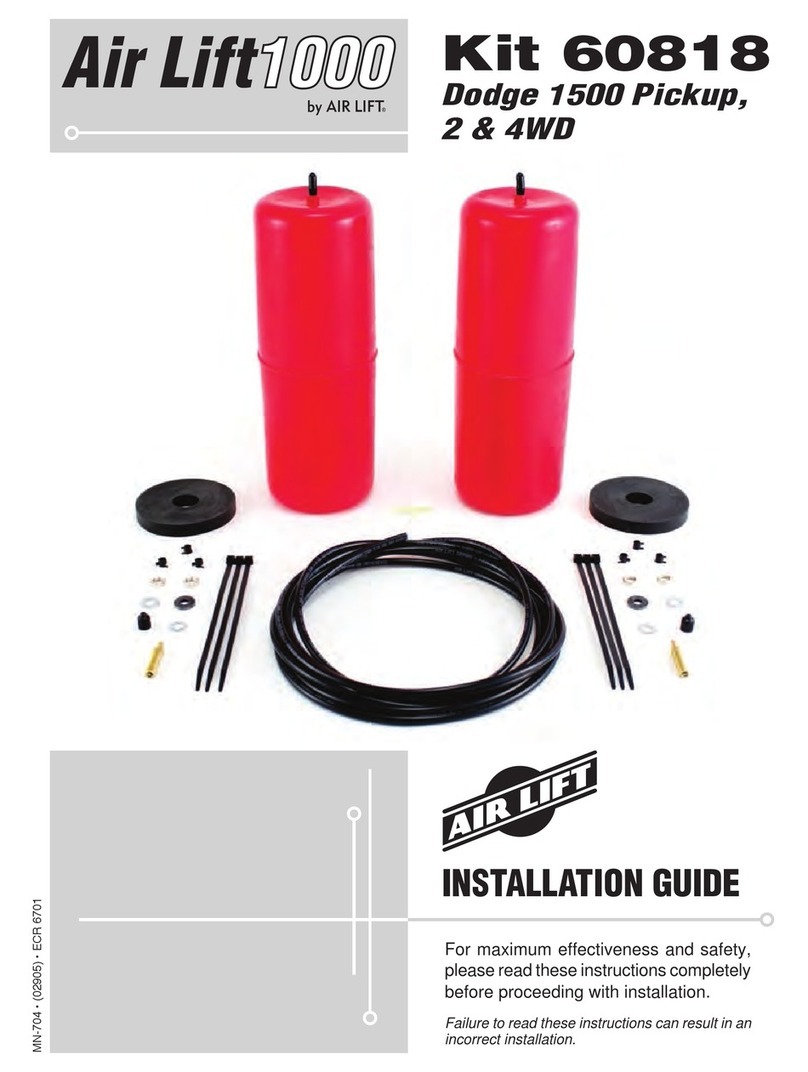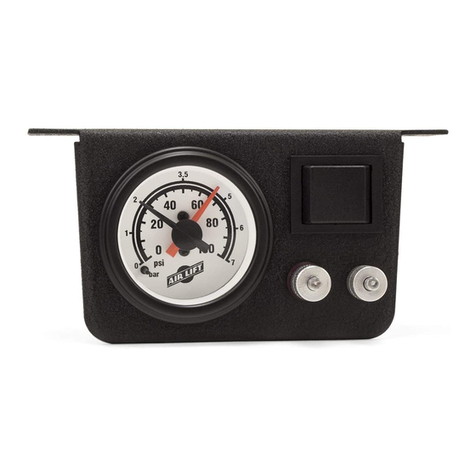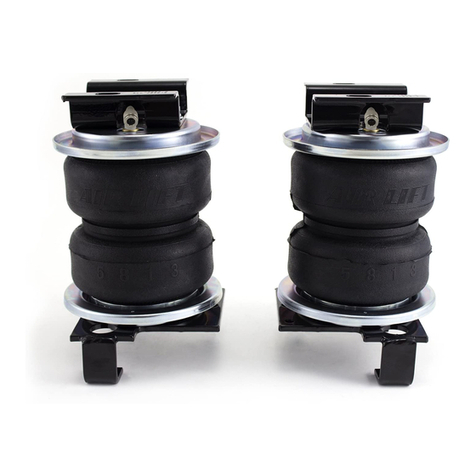
4
Technical Support
1-800-248-0892
Ext. 2
Air Line to
Bellows
FF
Vehicle body
or bumper
GG
GG
EE
DD
CC
V. Installing the Air Lines
1. Choose a convenient location for mounting the inflation valves.
Popular locations for the inflation valve are: the wheel well
flanges, the license plate recess in bumper, under the gas cap
access door, or through license plate itself.
NOTE: What ever the chosen location is, make sure there is
enough clearance around the inflation valves for an air chuck.
2. Drill a 5/16 " hole to install the inflation valves.
3. Cut the air line assembly (AA) in two equal lengths.
CAUTION: When cutting or trimming the air line, use a hose
cutter (Air Lift P/N 10530), a razor blade or a sharp knife. A
clean, square cut will ensure against leaks. Do not use wire
cutters or scissors to cut the air line. These tools may flatten or
crimpthe air line, causing it to leak around the O-ring seal inside
the elbow fitting.
Figure 7
4. Place a 5/16 " nut (GG) and a star washer (FF) on the air valve. Leave enough of the inflation valve in front of the nut
to extend through the hole and have room for the rubber washer (EE), flat washer (DD), and 5/16" nut (GG) and cap
(CC). There should be enough valve exposed after installation - approximately 1/2 " - to easily apply a pressure
gauge or an air chuck (Figure 7).
5. Push the inflation valve through the hole and use the rubber washer (EE), flat washer (DD), and another 5/16 " nut
(GG) to secure it in place. Tighten the nuts to secure the assembly in place (Figure 7).
6. Route the air line along the frame to the air fitting on the air spring. Keep at least 6" of clearance between the air
line and heat sources, such as the exhaust pipes, muffler, or catalytic converter. Avoid sharp bends and edges.
Use the plastic tie straps (BB) to secure the air line to fixed, non-moving points along the chassis. Be sure that the
tie straps are tight, but do not pinch the air line. Leave at least 2" of slack to allow for any movement that might pull
on the air line.
7. Cut off air line leaving approximately 12" of extra air line. A clean square cut will ensure against leaks. Insert the
air line into the air fitting. This is a push to connect fitting. Simply push the air line into the air fitting until it bottoms
out (9/16" of air line should be in the fitting).
8. Repeat entire installation procedure for the remaining side.
VI. Checking for Leaks
1. Inflate the air spring to 30 p.s.i.
2. Spray all connections and the inflation valves with a solution of 1/5liquid dish soap and 4/5water to check for leaks
(Figure 24). You should be able to spot leaks easily by looking for bubbles in the soapy water.
3. After the test, deflate the springs to the minimum pressure required to restore the Normal Ride Height, but not less
than 5 p.s.i.
4.
IMPORTANT:
Check the air pressure again after 24 hours. A 2 to 4 p.s.i. loss after initial installation is normal.
Retest for leaks if the loss is more than 5 lbs.





